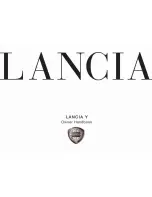
Model LR-26C, LR-623, LR-28A, & LR-2355 Sub-Frame Hoist Installation and Operation Manual
Stock No. 1657499
Page 13 of 25
"BODY PROP"
NOTE:
In order to comply with paragraph 10 of Federal Regulation #1926.601, all TBEI-Rugby hoists
will be sold with one body prop. It is the responsibility of the installer to determine whether one
body prop is sufficient. The following information will help in making that determination.
The body prop is designed for use only when the body is empty. The purpose of the body prop is
to hold an empty body in the raised position when performing maintenance or inspection on the
hoist, body, or any component that requires working under an
empty
body.
Some applications may require 2 or more body props to support the
empty
body. To determine
how many body props your application requires, refer to the following information.
WARNING:
Being under a raised body can result in serious injury or death should the body inadvertently
descend.
Never
position yourself or allow others to position themselves under a
loaded
body.
Always
prop the
unloaded
body up using the body prop/s supplied.
Remember
, body props are
to be used only on an
unloaded
body. When two props are provided, both props must be used.
WARNING:
Do not use body prop to support a loaded body!
WARNING:
Do not perform maintenance under a raised body without first blocking the empty body up with
the body prop/s.
WARNING:
Do not use a body prop that is bent or otherwise damaged. A damaged body prop will have a
reduced holding capacity, and may break when used to hold up the body. This could cause serious
injury or death. Replace a damaged body prop before using it.
WARNING:
Be sure to install the body prop according to the
“INSTALLATION OF BODY PROP”
section
of this manual.
The following is a step by step procedure to determine how many body props are required for this application.
1.
The TBEI-Rugby Part Number 03 0703 body prop is to be used with this hoist. Determine if this is the
body prop you have by referring to Figure 6.
2.
Determine the "P" value referring to Figure 7. The "P" value is the horizontal distance between the rear
hinge and the prop.











































